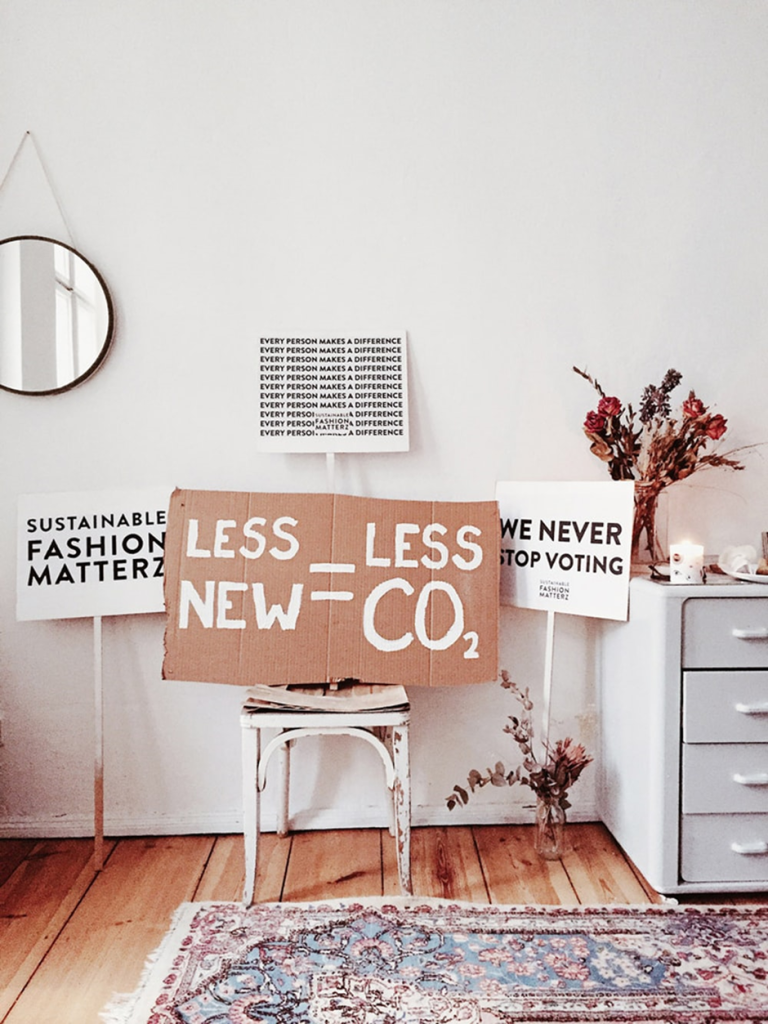Blog
PLANT-BASED TEXTILES VS. RECYCLED PLASTIC:
WHAT’S THE BETTER TEXTILE TO USE?
All The Pros And Cons You Should Know About In The World Of Sustainable Fashion And Textiles

By Lora O’Brien
When it comes to sustainable fashion and textiles, we’re somewhat overwhelmed by the choices we have today. Once upon a time, leather and fur were popular textiles used, alongside cotton. But it’s 2022, and times have changed, that’s for sure! We now have textiles made from fruit, leather made from cactus, and single-use plastic are even being given a new lease of life.
But one question remains: which is better? Sure, we have fabrics that have originated from organic sources that grow naturally on our earth, such as Pinatex, a leather made from pineapple, or Mylo, a mushroom leather alternative. But we can’t deny that our planet is drowning in plastic. At best, the plastic will break down slowly over time, at worst some plastic never does and will instead stick around for hundreds of years, polluting us further. Thankfully nowadays, companies have invented innovative textile technologies that transform it into a high-quality plastic-based textile that mimics the look and feel of leather, minus the cruelty associated with it.
So, which is better? Let’s take a look at both sides, and then decide.
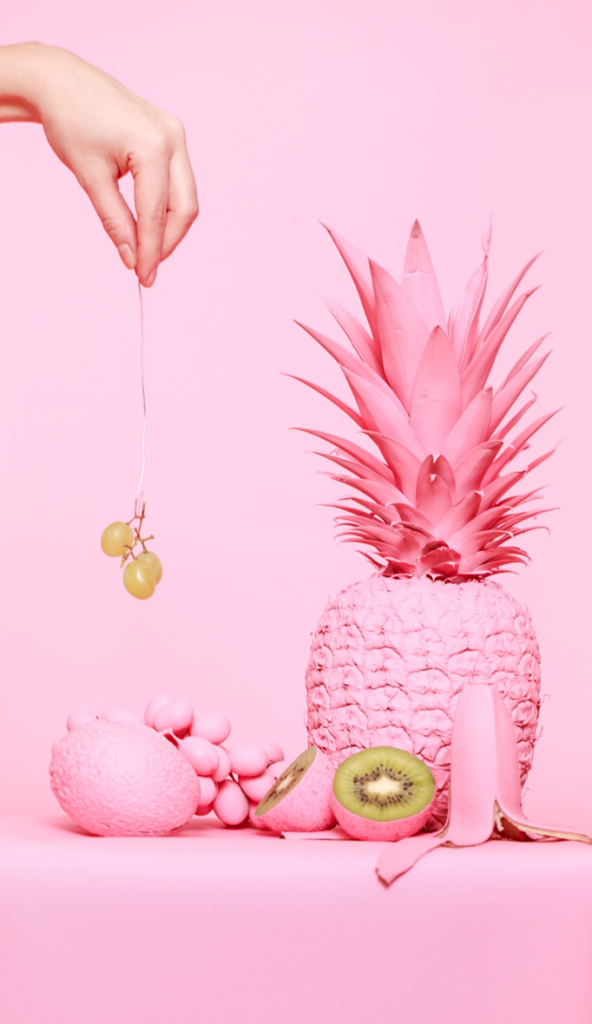
PLANT-BASED FABRICS
Thanks to sustainable fashion and textiles innovation, it’s easier than ever in this modern era to ditch animal-derived materials in favour of more eco-friendly textiles. And though the market was minimal, it’s now growing exponentially, with more plant-derived options available than before.
While many will argue that leather and fur are still sustainable options, you could counter that we’re raising a conscious generation, and the cruelty associated with these materials used to make clothing and apparel has consumers seeking out replacements.
Some popular plant-based textiles that many favour are:
Piñatex: Ananas Anam, the makers behind Piñatex, make the textile from waste pineapple leaf fiber. The leaves are the by-product of existing agriculture, and the textile is natural, sustainably sourced, and cruelty-free. Today brands use textile to create everything from footwear and handbags to home furnishings.
Muskin: Ever thought mushrooms have an almost leather-like appearance? You probably won’t be surprised to learn it has been turned into sustainable leather-like materials. Made from mycelium, the underground root structure of mushrooms, Mylo is a brand that creating mushroom leather that has been used by many mainstream brands such as ADIDAS, lululemon and Stella McCartney.
Desserto: Made from cultivated cactuses, Desserto is a 100% cruelty-free and vegan textile. Made from a farm in Mexico, nopal cactus is used to make a textile that requires zero chemicals or toxic products, and the water resources used to make the textile are limited, too.
Apple Leather: Apple leather, otherwise known as Pellemela, is made from the waste of the apple juice industry. Made from the Italian brand Frutmat, they specialize in recycling this biological waste into a sustainable textile that is waterproof, breathable, and durable. You’ll commonly find this textile used for purses, handbags, and footwear, especially running sneakers.
Tômtex: Tômtex is a 100% biobased material that is created from shell seafood waste, coffee waste, or mushrooms and is a sustainable alternative to animal leather. It’s 100% biodegradable, and free of plastic and PLA.
Fruit Leather: Much like the name suggests, fruit leather is made from fruit waste. One brand using mangos to make textiles is Fruitleather Rotterdam. They use their brand as a platform to spread awareness of the food waste issue our world faces and to also show how waste can be utilized in a positive way. The textile can even be embossed to give it a leather-like finish.
Cork Leather: Once a material associated with the opening of a bottle of wine, cork has become a favourable textile. Cork is sustainably harvested from the cork oak tree by simply shaving away the bark. It’s then laid out in the sun to dry before requiring water to be turned into a textile for sustainable fashion. It can be used for making shoes, handbags and even yoga mats!
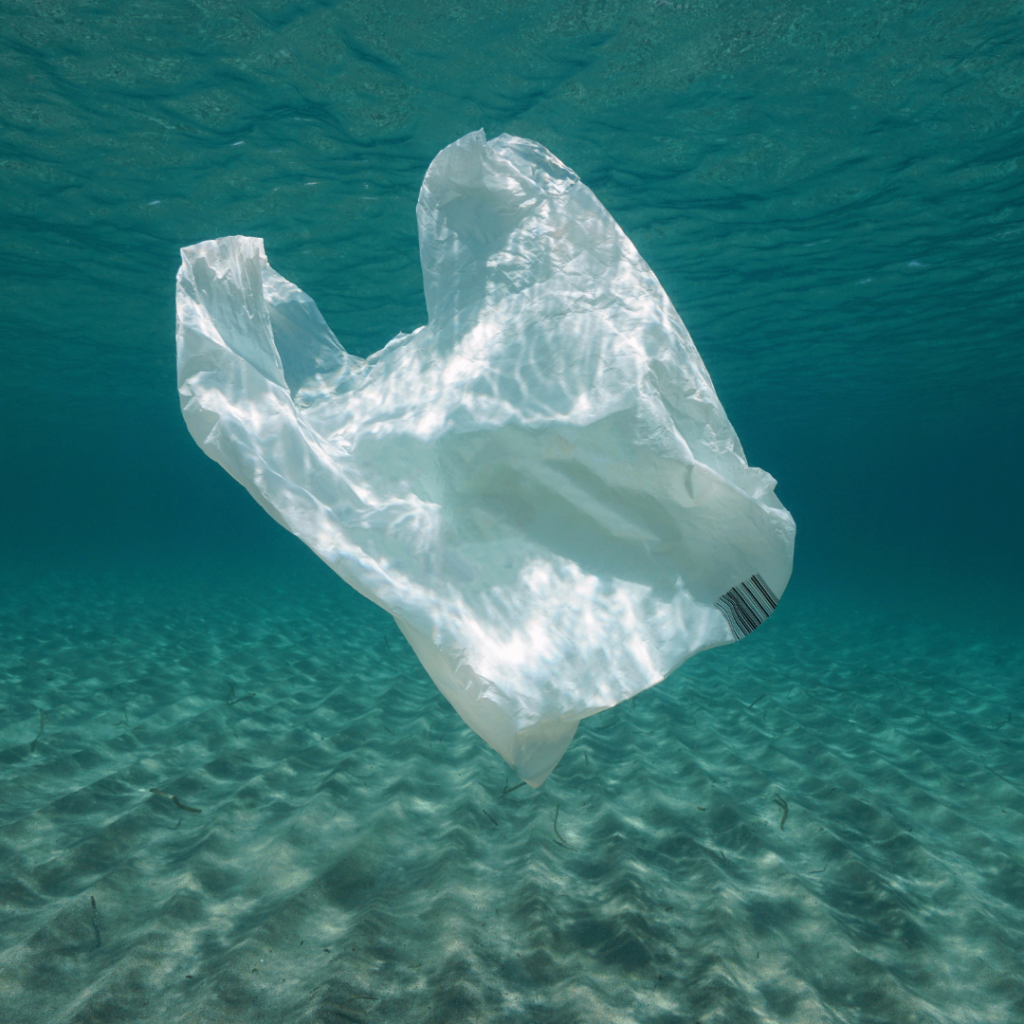
RECYCLED PLASTIC FABRICS
When it comes to recycled fabrics, they don’t always get the love they deserve. Like anything in life, there will always be good and bad versions. There are some textiles such as PU which can be toxic, and not something you’d use if you’re looking for sustainable options. But there are also many man-made fabrics that can offer high-quality performance qualities that surpass some natural materials, such as elasticity and being waterproof and stain resistant.
But there are some brands creating fabulous, recycled plastic textiles that can be used in all kinds of fashion, from clothing to footwear, while also giving a solution to the overwhelming plastic pandemic that our planet faces.
Some brands that I personally think are doing good things for the planet are:
B-Mesh: Coined by the brand Veja, B-besh is bottle mesh, a textile made from recycled plastic bottles. The brand uses three plastic bottles in each pair of sneakers that they make, and many favour this textile due to it being breathable and waterproof, the ideal characteristics for their footwear brand.
ECONYL: Econyl is recycled nylon, and is made using synthetic waste from ocean plastic, such as abandoned fishing nets and waste fabric, and transforms them into new nylon fibers. Though you’d struggle to tell the difference in texture between this and regular nylon, Econyl is made using a closed-loop system which uses less water. The textile can be used to make swimwear, leggings and underwear.
Brands such as Remeant and Repreve have found innovative ways to take single-use plastics and reduce the volume of plastic waste that would otherwise inundate our water systems and clog up landfill sites, instead turning them into textiles to be used in fashion.
Remeant collects soft plastic from industrial waste directly from factories, saving tonnes of non-recycled plastic from being sent to landfills and instead converting them into textiles that can be used for shoes, bags, jackets, raincoats and even home accessories.
Repreve makes its own recycled fiber using plastic bottles made from PET. To produce this, the polymer is mechanically shredded into confetti-like pieces and then converted to pellets which are melted and spun into a yarn to be used. Due to this being soft to tough and durable, it makes a popular option for clothing such as fleece jackets, swimsuits and sportswear.
Up-fuse is a brand that also upcycled tired and plastic bags.
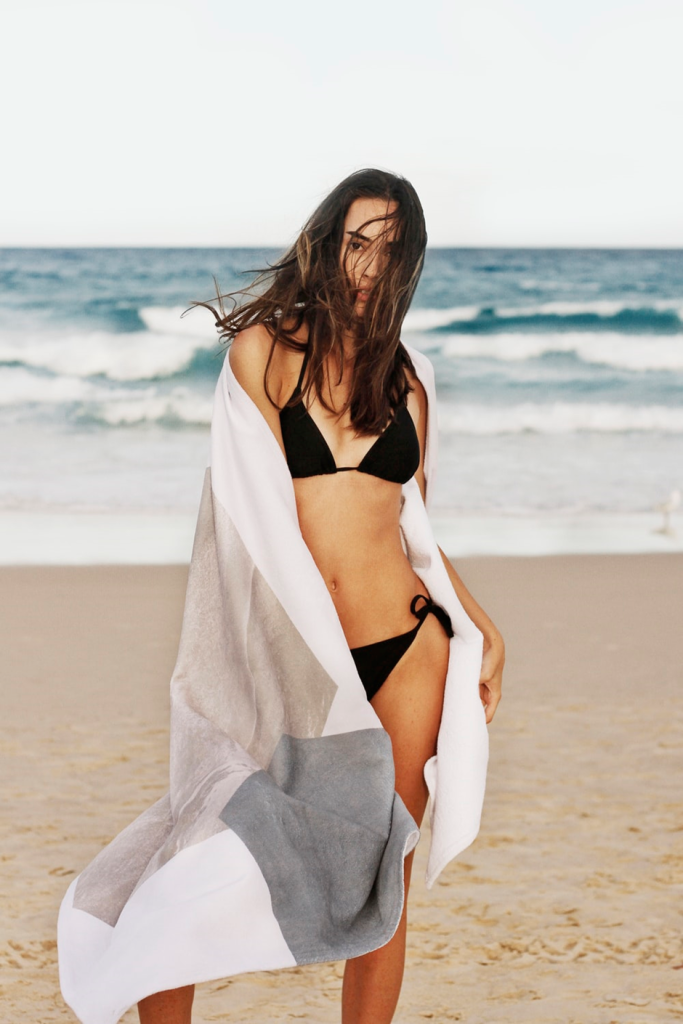
THE PROS AND CONS
Like most things in life, there is always a pro and a con to weigh up when deciding between two things. Ultimately, if seeking a sustainable textile, you’re likely looking for a textile that is cruelty-free, which all of these textiles are. The pros and cons will really depend on what the textiles are used for and the problem you personally feel needs to be solved. We vote for the world we want to live in with the way we shop and spend, therefore your contribution to help is through the textiles you use.
One area people tend to weigh up on is water consumption. The argument that animal-based leather requires a lot of water is not new, and so people looking for ethical alternatives factor in how much water is required to make it. Both fabrics come in strong for this category. Bamboo plants will need much less water than most crops but still a considerable amount to grow, while PET demands little water during production, but the dyeing process is quite water-heavy. So, factoring this into the pros and cons, both natural and recycled plastic textiles draw into this category.
Another area to focus on is availability. How available are the textiles you’re looking to use? In this case, though plastic is swamping our planet, we do have so much readily available plastic. Plus, the process of turning plastic and turning it into a usable textile is very well developed. Bamboo textiles score low in this category since the plant is only grown in large quantities in China and Taiwan, which is an issue for local production.
When it comes to plant-based leather textiles, there is a wide variety available. The pros are that when it comes to vegan fashion, you don’t have to sacrifice quality over ethics. Whether it’s orange peels, banana skins, apples or mushrooms, there is a plethora of plant-based options which can be used to mimic animal-based textiles such as leather and suede.
Another pro is that these plant-based textiles are durable and breathable and many have their own natural, antibacterial properties. The tanning process is done so using an all-nature, chemical-free process, so you can’t argue that it’s far superior to the process behind some plastic textiles.
People tend to favour plant-based textiles due to the belief that they’re biodegradable and can be decomposed without leaving behind any chemicals of toxic residues. This is, in part, untrue. In their raw form, many organic plant resources can decompose naturally, but some known brands take the organic material and turn it into a non-biodegradable textile.
When it comes to the cons, I’d have to be honest and say that some of these textiles aren’t sustainable on a bigger scale due to how expensive they can be to produce. Plus, there’s the fact that they’re nowhere near as durable as animal-based leather, so you can’t guarantee how long they’ll really last.
When it comes to recycled plastic, the main pro you’ll find talk about is the fact it’s helping us to combat plastic that is being thrown away in landfills and polluting oceans. Brands that upcycle and repurpose these plastics are doing so in an innovative way that further extends its life, so it’s not left to pollute the planet and emit more gas emissions while piling up in landfills. These recycled textiles are just as good as the virgin version but require fewer resources to make them since they already exist. The quality doesn’t diminish, and it can only lessen the extraction of crude oil and natural gas from the Earth which is used when new plastic is created. For example, PET requires 59% less energy to create than virgin polyester and is suggested to emit 79% less CO2 in comparison to new materials.
When it comes to recycled plastic and its cons, many tend to argue that recycled plastic clothing continues to pollute the planet even after it’s been repurposed. Washing one load of recycled textiles could release millions of tiny pieces of plastic debris back into our oceans, but I’d argue that this is only applicable for items you’re going to wash, such as clothing. Using recycled plastic in items such as footwear and accessories is a great way to upcycle plastic that would otherwise be detrimental to our planet while being durable and long-lasting.
Some may also argue that the process of recycling PET has a further impact on our environment, too. This is due to the polyester chips generated by mechanical recycling varying in colour. Some choose chlorine-based bleaches to whiten the base, concealing any yellow tones, which often need re-dyeing. This process requires a lot of water, energy, and the use of chemicals, which isn’t ideal.
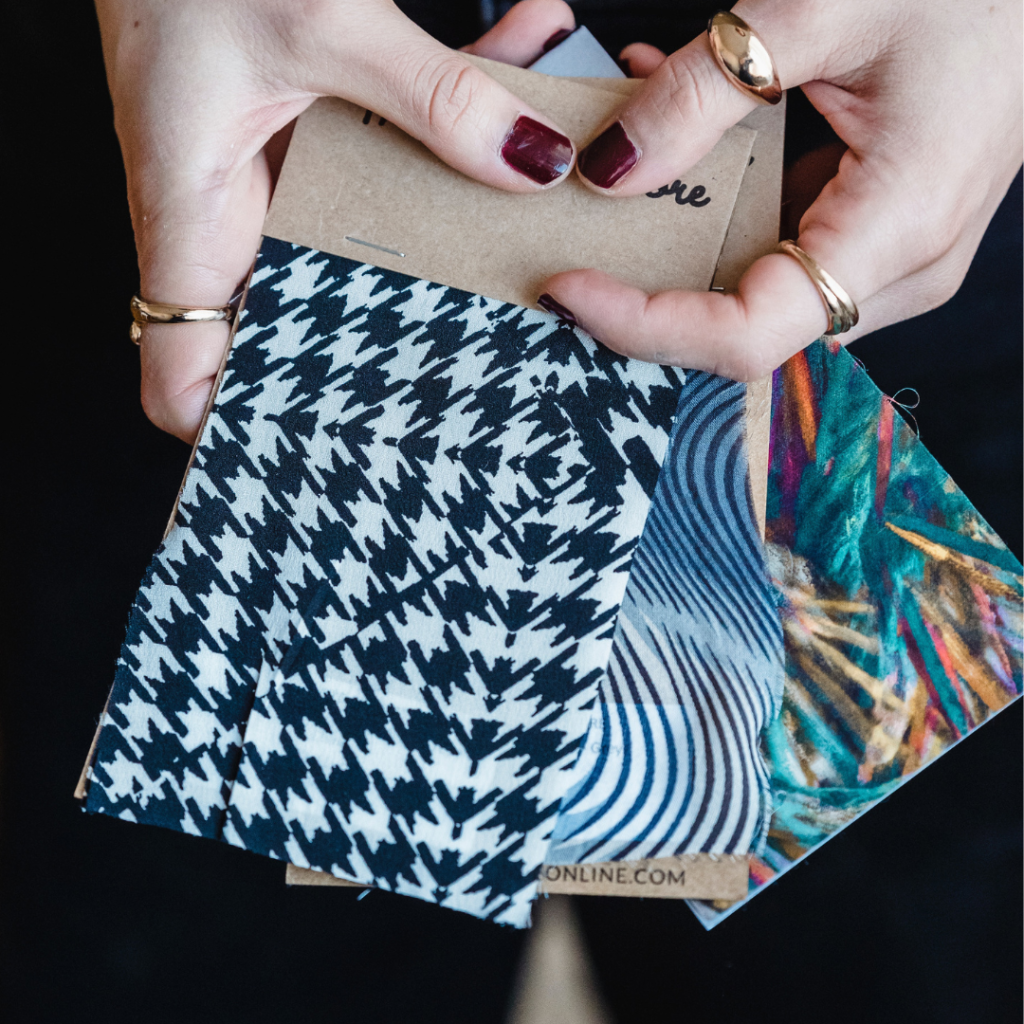
WHICH TEXTILE TO CHOOSE?
You may be expecting a clear answer, but unfortunately, trying to choose which fabric is best for the planet may leave you with more questions than answers. I think one takeaway from this article is to acknowledge how far we’ve come. Leather has served humans for centuries, but as we’ve evolved over time, so have the materials we’re choosing to use. We’re moving away from conventional leather and celebrating many innovative textile options in this modern era that either utilizes what mother nature has already blessed us with or are helping to repurpose things like plastic which threaten to harm her.
Whether you opt for a biodegradable plant-based textile or prefer the durability of recycled plastic textiles, you’ve already taken a step towards embracing a new world in which we care about what our garments and homewares are made from.
To check about Remeant sustainable fabrics and their qualities please click here.
If you’d like to consult with us further or have any questions feel free to contact us here.
